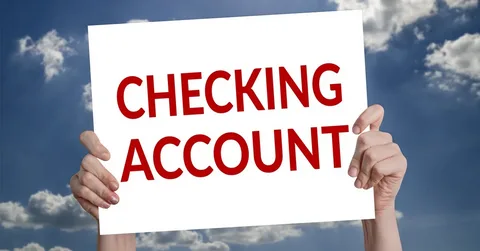Introduction to Free Checking Accounts
Free checking accounts have emerged as an appealing financial solution for consumers seeking to avoid the unnecessary costs often associated with traditional banking services. These accounts are designed to cater to individuals who wish to manage their finances without incurring monthly maintenance fees, minimum balance requirements, or unexpected transactional charges. The main advantage of free checking accounts lies in their transparent pricing structure, which eliminates the confusion that can arise from hidden fees.
Unlike typical checking accounts, which may impose various charges for services such as account maintenance, ATM access, or insufficient funds, free checking accounts provide customers with a straightforward approach to banking. This simplicity is particularly important for consumers who are budgeting on tight margins or seeking to optimize their financial health. By removing these financial barriers, free checking accounts empower individuals to access their funds freely and maintain greater control over their financial decisions.
Moreover, free checking accounts often offer essential features such as online banking, mobile banking apps, and access to thousands of ATMs without cost. This convenience further distinguishes them from traditional accounts that may require clients to meet certain criteria for fee waivers. Understanding the differences between free checking accounts and conventional options is vital for anyone looking to navigate the modern banking landscape effectively. Adopting a checking account that has no fees not only enhances one’s financial well-being but also fosters healthy spending habits and improved budgeting practices.
Criteria for Evaluating Free Checking Accounts
When assessing free checking accounts, it is essential to consider various factors that can significantly impact your banking experience. These criteria serve as a framework to help you identify an account that aligns with your financial needs and preferences.
First and foremost, access to ATMs plays a critical role in determining the convenience of a checking account. It is advisable to choose an account that provides a wide network of ATMs, ensuring that you can withdraw cash without incurring additional fees. Some banks offer reimbursements for out-of-network ATM fees, which may also be an attractive feature to consider.
In today’s digital age, online banking features have become a priority for many account holders. Look for free checking accounts that offer a robust online banking platform or mobile application. Essential features to consider include the ability to transfer funds, pay bills, and check account balances easily. Security measures, such as two-factor authentication, should also be evaluated to protect your personal and financial information.
Customer service quality is another vital factor when reviewing free checking accounts. Responsive and helpful customer support can make a significant difference, especially when encountering issues or having inquiries. Explore options for contacting customer service, whether via phone, email, or live chat, to ensure that assistance is readily available when needed.
Account accessibility is important as well; evaluate whether the institution has branch locations near you or offers online banking services that make it easy to manage your finances from home. Finally, consider any additional product offerings, such as savings accounts, credit cards, or investment options related to the checking account, as these can enhance your overall banking experience.
By examining these criteria, you can make an informed decision when selecting a free checking account that best suits your lifestyle and banking habits.
Top Free Checking Accounts Reviewed
When seeking a free checking account, it is essential to evaluate various offerings in the market to make an informed decision. Here are some of the top-rated accounts currently available:
Chase Total Checking® stands out due to its versatility and wide accessibility. While there is a monthly service fee, it can be waived by fulfilling requirements such as maintaining a minimum balance or making monthly direct deposits. Customers appreciate the convenience of the extensive ATM network and the user-friendly mobile app, providing a positive banking experience.
Ally Bank’s Interest Checking Account is another noteworthy mention. Not only does it offer no monthly maintenance fees, but it also provides interest on the balance, an appealing feature for those looking to maximize their savings. There are no requirements for a minimum balance, making it accessible for many customers. Testimonials indicate satisfaction with its online banking interface and responsive customer service, highlighting the overall quality of the banking experience.
PNC Bank’s Virtual Wallet® offers a unique combination of checking and savings features. This account’s structure enables users to manage their finances more effectively, and it comes with no monthly fees if certain criteria are met, such as making direct deposits. Many users commend the budgeting tools included in the app, which further enhances their banking experience.
Discover Bank’s Cashback Debit Account is another contender that attracts attention with its cashback rewards on debit purchases. There are no monthly fees and no minimum balance required, making it appealing for budget-conscious customers. Customer testimonials often praise its straightforward setup process and responsive online support.
Each of these free checking accounts has its advantages and potential drawbacks. By carefully evaluating these options, individuals can determine which account best suits their financial needs and lifestyle preferences.
Tips for Managing Your Free Checking Account
Managing a free checking account efficiently is key to avoiding unnecessary fees and maximizing its benefits. One of the first strategies to adopt is to remain aware of any requirements that may accompany the account, such as maintaining a minimum balance. Understanding the terms and conditions associated with your account will prevent unexpected charges. To facilitate monitoring, setting up alerts through your bank’s online platform can be advantageous, as these notifications can prompt you when your balance approaches the minimum threshold.
Utilizing online banking tools is another effective approach. Most financial institutions offer mobile apps and online platforms where you can easily track your transaction history, make transfers, and pay bills. This not only promotes seamless management of your finances but also allows for instant visibility into your spending habits. For an even tighter grasp on your account activity, consider categorizing your expenses. This practice can aid in budgeting for future transactions and preparing for any upcoming fees related to specific activities.
Maintaining diligent record-keeping is equally important. Regularly reviewing your account statements helps identify unauthorized transactions or areas where you might be overspending. Moreover, monthly reconciliations against your personal records ensure that your balances align and that you are meeting any stipulated requirements. Utilizing personal finance software or apps can simplify this process by tracking expenses and reporting on your overall financial health.
Lastly, actively engaging with your bank’s customer service when questions arise can be beneficial. They can clarify any confusing terms or provide information on potential fee waivers and account adjustments that can help enhance your experience with your free checking account. Being proactive will ensure that you derive the most value from your banking experience.






